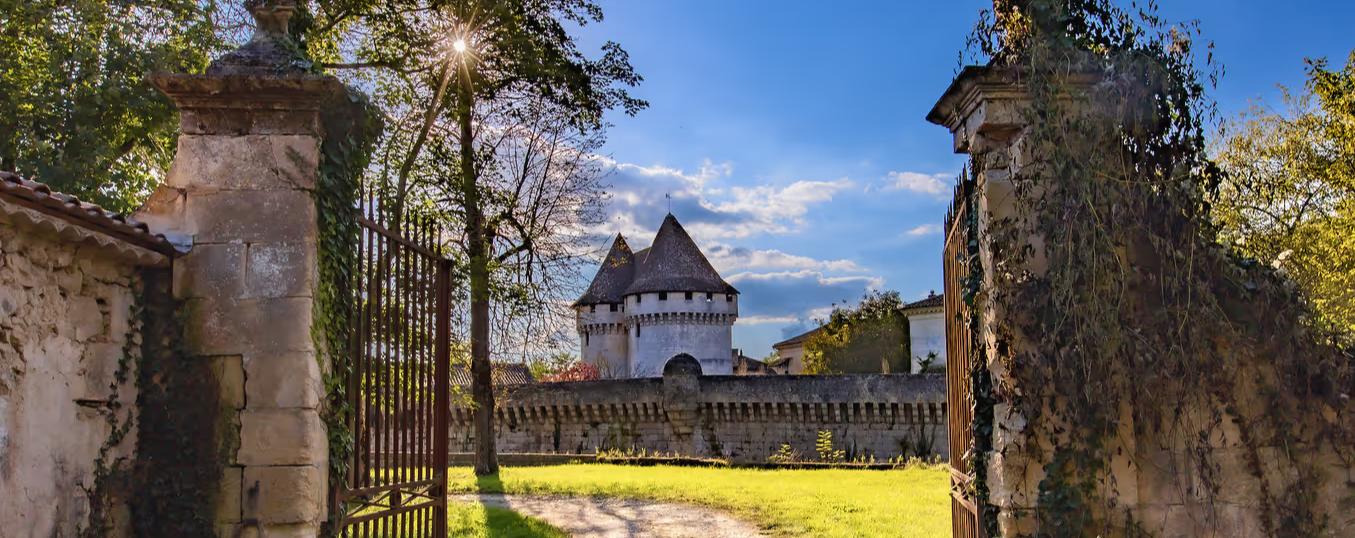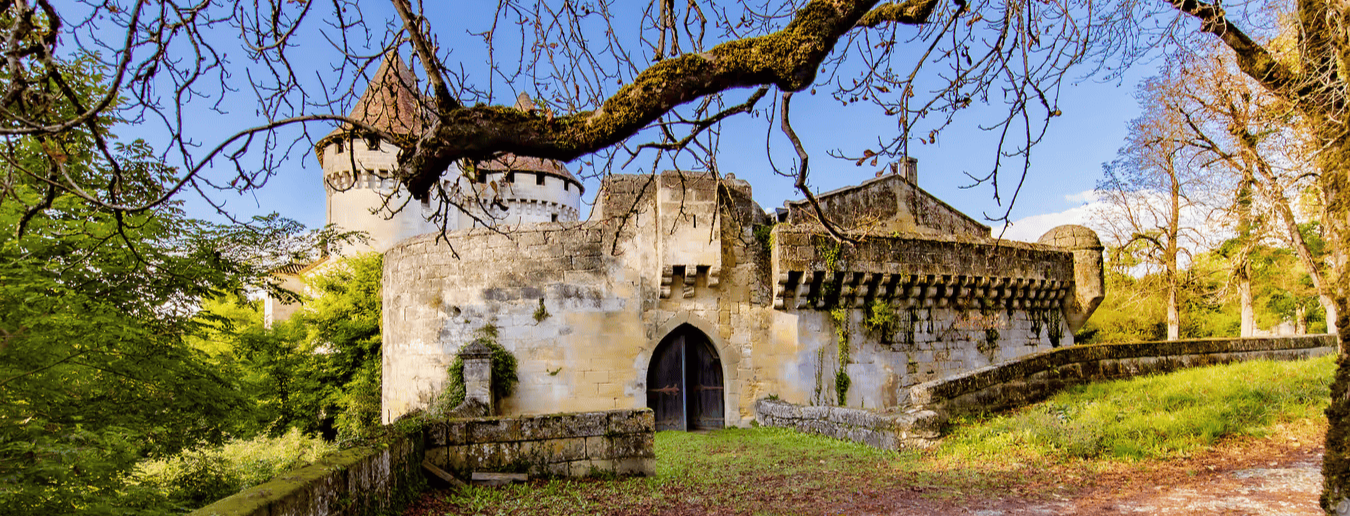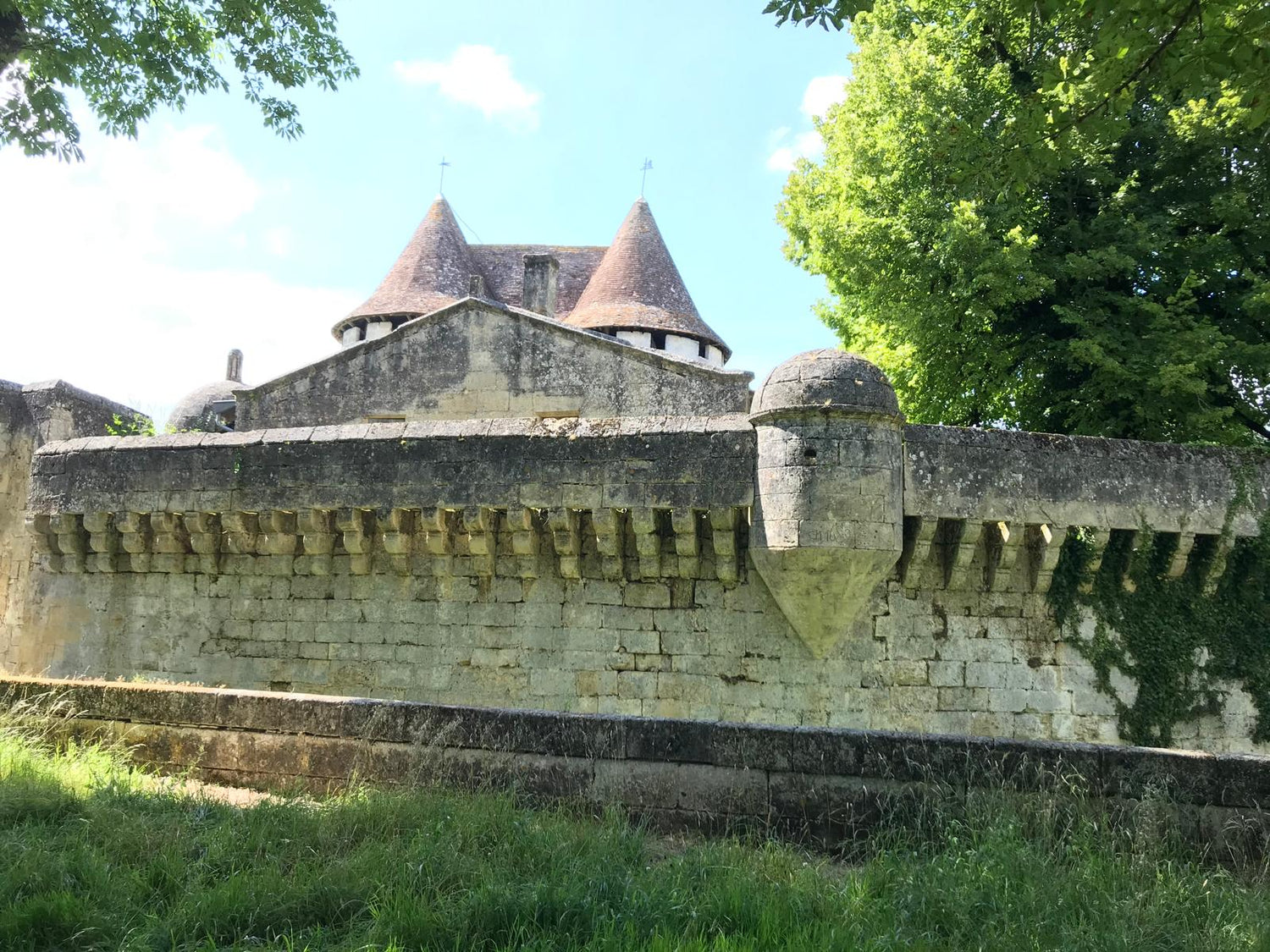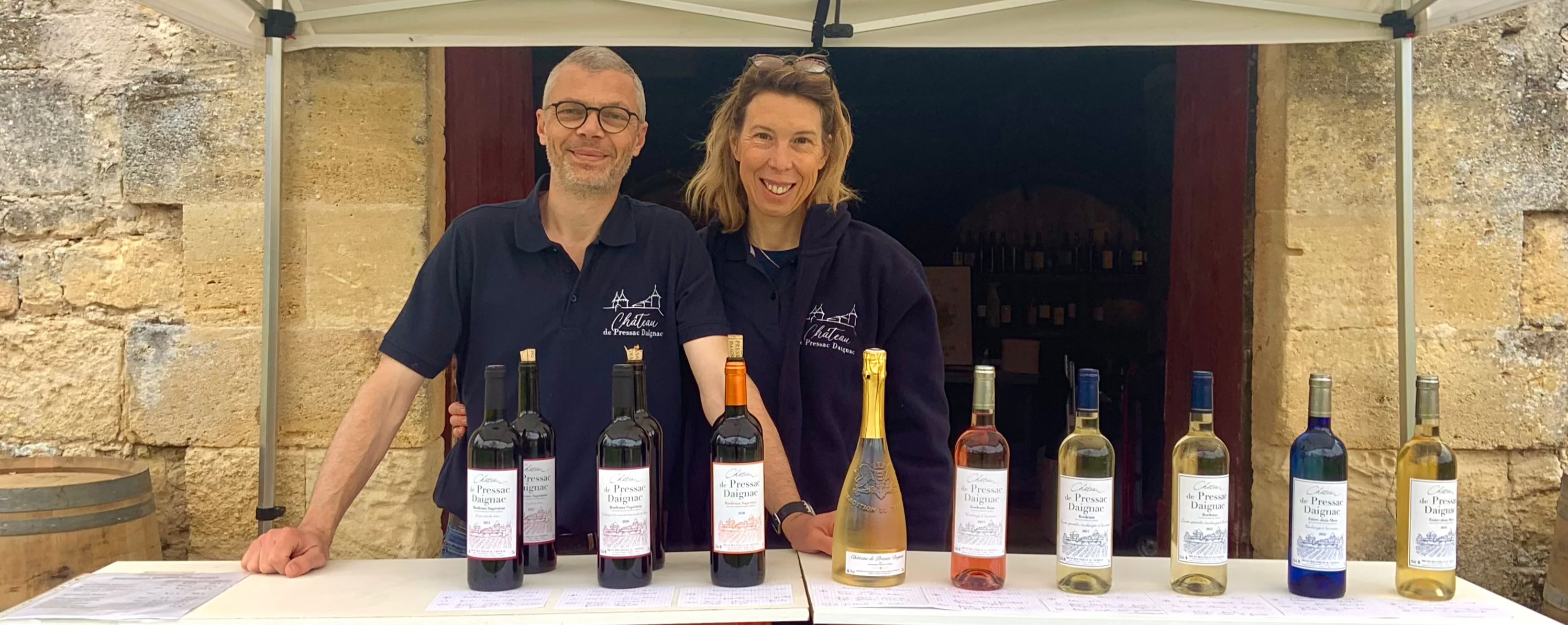
Château de Pressac Daignac: 7 centuries of stones and vines
The history of Pressac probably dates back to prehistoric times, as evidenced by the many caves in the region. What is certain is that human presence there has been evidence since Roman times, between the 1st and 4th centuries AD. Indeed, in 1993, excavations revealed the remains of a Gallo-Roman villa at the highest point of the estate. This choice of location suggests that vines, then cultivated only on the heights, were already part of the Pressac landscape.

At the beginning of the 14th century, Thibaud and Bernard-Arnaud de Pressac, relatives of Pope Clement V, received these lands as a reward for their feats of arms. They built a fortified house there, or in the strict sense a fortified farm, the construction of which was authorized on April 1, 1305 by Edward I, King of England and Duke of Aquitaine (and great-grandson of Henry II Plantagenet and Eleanor of Aquitaine).
Around 1430, the Ségur family acquired Pressac and remained its owners for a century. Several of its members faithfully served the King of France, and one of them even obtained the privilege of building a dovecote, a fuie, a symbol of nobility and prosperity.

In 1537, the estate entered the La Chassaigne family, when Geoffroy de La Chassaigne, advisor to the king in the Parliament of Bordeaux, bought it. Pressac remained in their hands until 1809, perpetuating the tradition of a rare and prestigious title: that of "Sudan", reserved for the lords of the place. One of the most illustrious figures of this lineage was a woman, Françoise de La Chassaigne, who married Michel de Montaigne in 1565, famous author of the Essais and member of the Parliament of Bordeaux.

With the 19th century, Pressac followed the course of history. In 1810, the General of the Empire Jean-Barthélémy-Claude-Toussaint Darmagnac took over the estate. A soldier of the Revolution, elected captain by his men in 1791, he distinguished himself on many battlefields under the Consulate and the Empire, he was governor of various provinces during the conquest of Spain. His name is inscribed on the Arc de Triomphe. He decided that his remains would rest in a monument that would recall imperial glory: an obelisk from which he continues to look at Pressac.

Since 1865, the Trincaud Latour family has watched over Pressac. At the beginning of the 20th century, Marcel de Trincaud La Tour undertook major modernization work. His son-in-law, René de Grateloup, left his military career to devote himself to the estate and the village, where he was mayor for 24 years. In 1973, his daughter Geneviève took over. With her husband Jacques Levassor, she expanded the vineyard, modernized the winemaking process and made Pressac shine until her retirement… in 2019, at the age of 81, after 46 years of dedication!
" The lord does not own his castle. He did not buy it. He received it as a deposit and must pass it on after him. He has the duty to take care of it, to make it profitable and to watch over the people who live there..."
- Régine Pernoud: History and Light
And today
In 2019, Marie Espérance and Arnaud Grislain took over from their aunt. They threw themselves fully into this adventure, aware of the legacy received, but also of the challenges to be met to place Pressac in the future.
From the very first years, they undertook modernization and renovation work on the estate. They developed a range of wine in order to better promote the production and develop sales to individuals.
More recently, they brought to fruition a project that was particularly close to their hearts: the opening of a gîte, to offer visitors a real immersion in the history and terroir of Pressac.

Today, their daily life is punctuated by work in the vineyards, but also by the management of the entire estate and welcoming visitors.
" Pressac is much more than a wine estate: it is a family adventure, a passion that drives us every day and a deep commitment to our terroir. We are committed to preserving the soul of the place while making it evolve, to continue to make it shine, today and for generations to come."
- Marie Esperance
